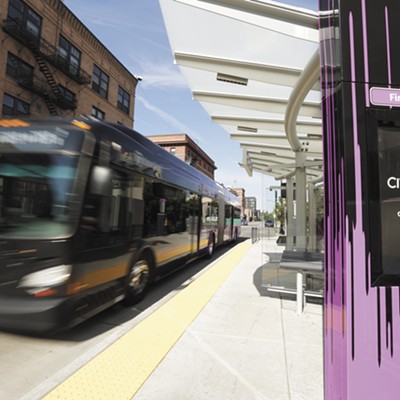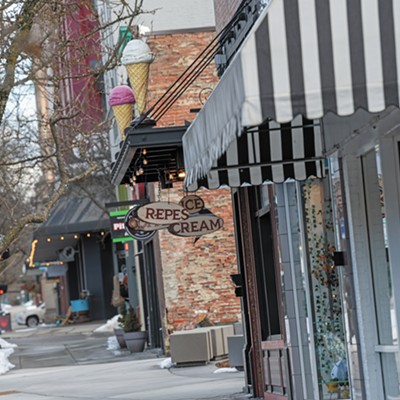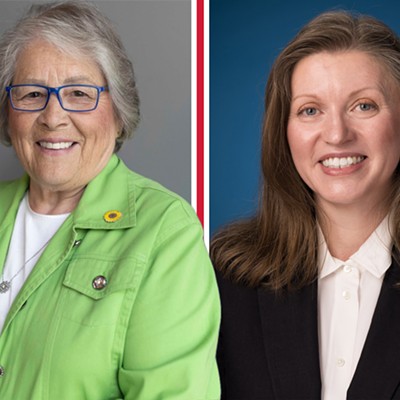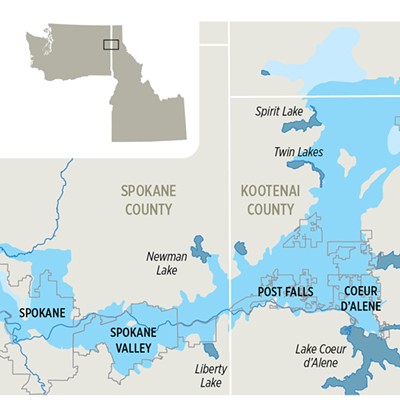W alking through my old 'hood is like walking on a strange, foreign planet. It doesn't really resemble anything that I remember when I was 14, trying to stay out of trouble. The only things the same these days are the Shop and Lorien Herbs; everything else has become foreign.
Every time I have lunch at South Perry Pizza, I feel like an alien in my own 'hood. Partly because the "new" Perry Street District is populated by people who would never have been caught dead on that street even in daylight hours 15 years ago. Not only have the buildings been given a facelift, but the people, walking on the perfect cement sidewalks with nary a crack in sight, are so rich and lily-white.
I miss my old 'hood. I miss the OGs who let the young girl bring the ball in from half court. I miss the 1-cent candies at the old pharmacy. I miss the feeling of belonging that I felt as I walked my dog to get a coffee at the brand new Shop. The neighborhood wasn't perfect, but it was our neighborhood. And the people who lived there were sometimes troubled by poverty and all the social issues that come along with it, but in some ways, there was never a more honest place in Spokane. Now, not so much.
Here is the thing about progress that city officials, budding entrepreneurs and hipster couples buying up cheap houses miss when they change a neighborhood like this: the people who were there before you were pushed out when "progress" arrived to the Perry District. Sure, the neighborhood looks "clean" and "inviting," but only for certain people. I can assure you that most of them aren't the people who lived there for decades.
With the rising prices of homes because of the sudden interest in living near Perry Street, many families who have been there forever had to find new housing in other "poor" neighborhoods. The issue of poverty isn't addressed, it's just been displaced. Sure, it looks prettier and more "alive," but the reality is that it's a really colorful Band-Aid on the real issue.
Even though I occasionally visit my first coffee shop, and now the pizza parlor, I don't have the same rights to that place anymore. It saddens me, because sure, that neighborhood needed help, but why couldn't we invest in the people already there?
It worries me as the new Sprague District is "revitalized" in a similar fashion as the Perry District. I hope that city leadership makes sure to include the people who have been there for generations as they refurbish it. Please don't leave out Sonnenberg's or Vien Dong as investments are made. And don't forget real people live, work and socialize in that neighborhood.
So let's just keep it real — gentrification sucks. That's really a simple concept. We don't have to erase and start over. And we don't need to push out those who are brown, or poor, or different. We need real solutions that lead to the old and new blending together to make neighborhoods better for everyone. It seems a no-brainer that a neighborhood is so much more interesting with a mosaic of old, new and culturally unique. And no one wants to miss out on Vien Dong's chicken pho, either. ♦
Tara Dowd, an enrolled Inupiaq Eskimo, was born into poverty and now owns a diversity consulting business. She is an advocate for systemic equity and sees justice as a force that makes communities better.





















